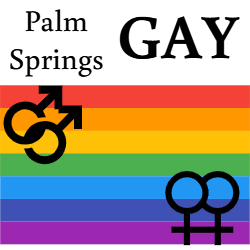Benjamin Ryan has been covering infectious diseases and LGBTQ health for two decades and contributes to the New York Times, NBC News, Guardian and Thomson Reuters Foundation.
Countless public health experts have made statements like this in the last two months. Members of the media and politicians have left the message ad nauseam without stopping to dissect what it suggests or hides.
This broad maxim – that everyone on Earth is susceptible to this worrying viral infection – may be factual on its surface. But it is so violently misleading that it amounts to misinformation.
Those who make such statements do not intend to harm. On the contrary, leaders at the Centers for Disease Control and Prevention, the World Health Organization, and elsewhere are repeating them because they commendably want to combat the societal stigma that gay and bisexual men face, which has been disproportionately affected by monkey pox. They know that stigma harms public health, including by discouraging testing for infectious diseases. And they do not want the rest of the public to be complacent about a potential new pandemic.
But as these public health experts well know, epidemiology is less concerned about whether anyone can get an infection; instead, the much more vital questions focus on which groups of people are most likely to be exposed to a pathogen, to get it, and why. In public health statistics, this study is of relative risk.
By reducing the risk of monkey pox to a simplified binary equation, public health leaders prioritize combating stigma over their duty to directly inform the public about the true contours and driving forces behind this global outbreak. In particular, they fail to properly convey the seriousness of this burgeoning crisis to gay and bisexual men.
Here is what we can distinguish from data collected on monkey cups so far: This viral outbreak does not only occur most among men who have sex with men. The confirmed cases, at least to date, have consistently occurred almost exclusively among this demographic, which accounts for 96 percent or more of the diagnoses where data are available.
Per capita, the few monkey cups in women and children remain very small compared to the number of gay and bisexual men. Of course, significant transfer can always occur among such other groups. But researchers at the WHO and elsewhere have speculated that the reproduction rate of monkey pox is likely to remain significantly lower in such demographic conditions – meaning the virus is more likely to hit transmission dead ends among them than among gay and bisexual men.
An unpleasant truth, which is documented in peer-reviewed articles, is that sexual behaviors and networks specific to gay and bisexual men have long made them more likely to get various sexually transmitted infections compared to heterosexual men. This includes not only HIV but also syphilis, gonorrhea, chlamydia, hepatitis B and sexually transmitted hepatitis C.
Global public health experts agree that skin-to-skin contact in connection with sexual activity between men has been the main cause of the monkey pox outbreak, at least so far.
Such experts have also argued that the risk of monkey pox for the wider population, who have no more sex partners, remains low – even “very low.” This is hopeful news, and the general public deserves to be reassured accordingly. Reducing the fear of infection will help combat inappropriate hysteria and prevent gay and bisexual men from being subjected to even greater stigma if they are portrayed as sinners in spreading the virus to others.
Such hostility devastated the gay community during the height of the AIDS crisis as the CDC launched a lengthy, misleading public service campaign with variations of the slogan “anyone can get HIV / AIDS.” These claims contradict the truth about the relative risk of HIV, which in Western nations has always predominantly affected gay and bisexual men.
Because the same is true of the monkey pox outbreak, recently launched vaccination campaigns are appropriately targeted at this group – especially those that report multiple recent sex partners that data indicate are associated with monkey pox acquisition. Unfortunately, state and local public health departments in the United States fail to report to the CDC vital demographic details about people diagnosed with monkey pox. This hampers the nation’s ability to respond to outbreaks with effective interventions, such as targeted vaccines, and to promote health.
In contrast, the rich data collection in the UK helps to solve the question of whether monkey pox only seems to occur predominantly among gay and bisexual men, because the vast majority of tests are performed among them. As we know from covid-19, differences in test positivity rates help control differences in test rates. And those numbers in the UK are sharp: U.K. The Health Security Agency reported that half of the men screened for monkey pox tested positive; women, on the other hand, tested positive only 0.6 percent of the time. No one under the age of 18 tested positive.
Tragically, the monkey cup outbreak is happening just as a shocking resurgence of anti-LGBTQ sentiments is gripping the United States. But public health officials cannot be expected to monitor public responses to epidemiological facts.
Gay men deserve to hear the unvarnished truth about monkey cups so we can act accordingly. We are adults. Be honest with us.
